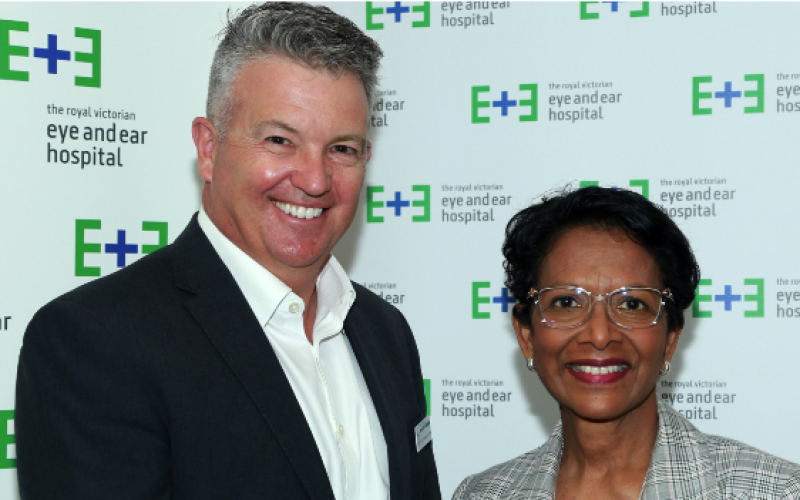As we celebrate another International Nurses Day, it is timely to reflect on the eye and Ear’s rich nursing history. Lucy Jones, one of the Eye and Ear’s earliest Matron’s, helped pave the way for generations of nurses, and her legacy continues to provide inspiration for our community to this day.
Working life and achievements
Lucy Jones assumed the role of Matron at the Royal Victorian Eye and Ear Hospital when the hospital was still in its early years and medicine too was in its infancy. Trained as a nurse at the Melbourne Hospital, Lucy graduated in 1902, and worked as Matron of the Bairnsdale Hospital before commencing at the Eye and Ear in 1908. Lucy was one of the earliest nurses to be registered with the first Nurses’ Board on 8 December 1924.
Working during the first few decades of the 20th century, Lucy was faced with the often-harsh conditions that characterised healthcare at the time. Patients usually required months to recover from surgery and in some cases stayed up to a year.
Conditions for nurses were not much better than those experienced by patients. Working 60-hour weeks with just one day off a year and living in cramped and uncomfortable conditions, it was an extremely demanding post. With few resources, it was common for nurses to not only look after the medical needs of patients but also to act in domestic roles. Nurses undertook most of the cleaning duties and physically carrying patients who needed it between wards and theatres.
In 1914, to help ease the physical burden on the nursing staff, Lucy obtained funding for a trolley, which could be used to transport patients to and from theatre more comfortably. However, when the trolley wore out and there were no funds to replace it, patients were again transported in canvas slings attached to poles.
Despite working under such harsh conditions, patients and staff alike respected Lucy as a caring and thoughtful leader who helped pioneer the Eye and Ear’s patient-centred approach to clinical care. During her tenure with the hospital, Lucy consistently fought for the rights of patients and staff and worked hard to improve conditions within the hospital.
Renowned otolaryngologist, Dr Jean Littlejohn worked alongside Lucy during her early years at the Eye and Ear. She later said, “Matron Jones was a disciplinarian but scrupulously fair in all her administration of not only the nursing staff but, when necessary, the resident medical staff.” In March we celebrated 100 years since Dr Jean Littlejohn joined the Eye and Ear as a resident medical officer. You can read the article here.
A respected member not only of Eye and Ear staff but of the medical community, the Minister for Health asked Lucy if she would coordinate nursing arrangements across multiple Melbourne hospitals during the influenza epidemic of 1918.
Resignation and legacy
Following her resignation in late 1939, the Committee of Management noted its disappointment, Secretary John Millar said in The Argus, 24 October 1939: “during Matron Jones’ 31 years of service to the hospital, staff had increased from 13 to 70, inpatients from 869 to 2,082 and outpatients from 6,400 to 25,000.”
The Committee said in a separate statement Lucy had been, “unsparing in her efforts for the relief of the sick poor and their return to health and strength. Her long association with the hospital has been marked by high efficiency and zeal and by the loyalty and goodwill of the staff.”
In the late 1960s, the Eye and Ear officially renamed its lecture theatre the Lucy Jones Hall in honour of her decades of dedicated service to the hospital.
In 2022, the theme for International Nurses Day is ‘Nurses: A Voice to Lead’. You can find out more here, or read more nurse stories via our website.


